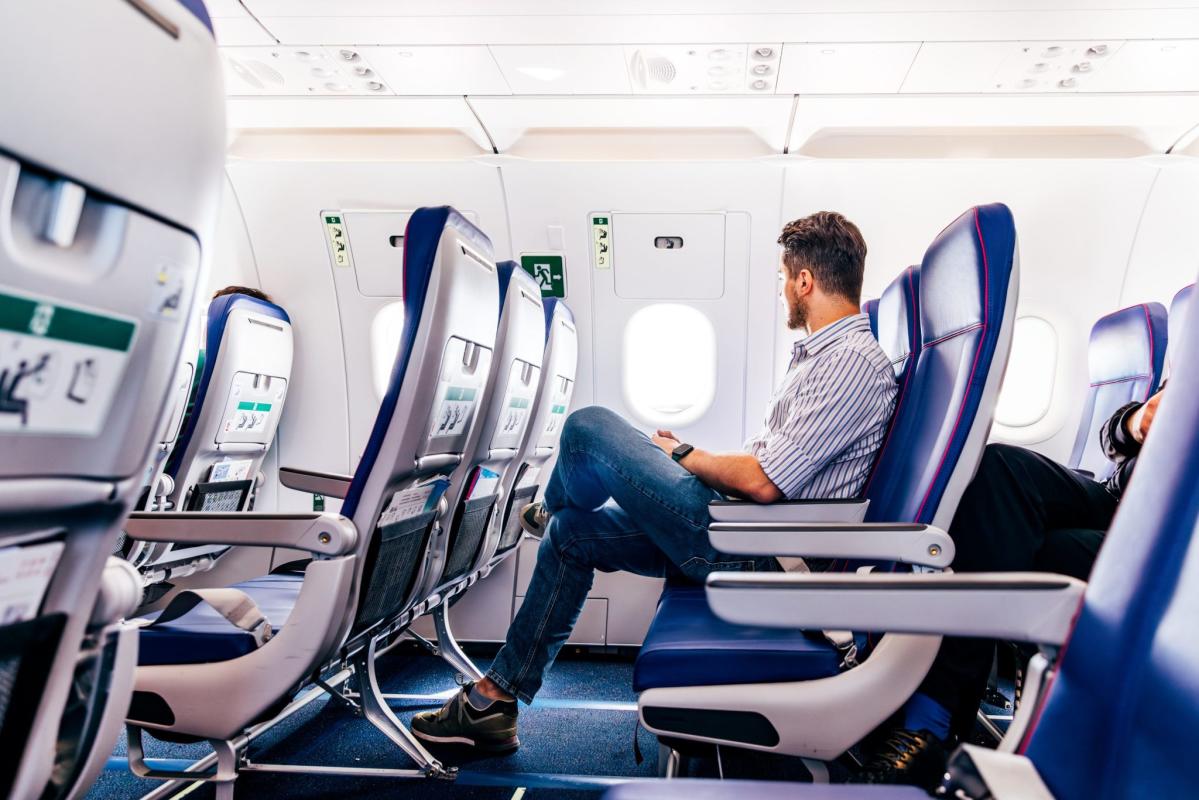


It’s been more than 50 years since low-cost airlines irrevocably changed the way we travel, opening up new cities and countries at affordable prices.
Today, budget airlines are looking to expand further, but the way they operate differs wildly on either side of the Atlantic, seeking new revenue streams in different ways.
Additional extras are the hallmark of European budget airlines. Easyjet has been upselling speedy boarding and all the ancillary parts, like extra legroom, for years, and these extras can sometimes account for more than 50% of the original ticket price.
Its rival, Ryanair, which once made headlines for announcing that it intended to charge travelers for using the bathroom, made an average of €24 per passenger from additional charges in the second quarter of 2023, an increase of 10% (its average airfare is just over €40 in Europe).
One big difference between Europe and the U.S. is that in the U.S., low-cost carriers generally operate out of the same airports as legacy carriers, so there’s less cost difference between the two, say 20 to 30% less. In Europe, costs can sometimes be as much as 50% lower when budget airlines operate out of smaller, lower-cost airports.
There’s also a bigger market to explore in Europe, particularly to new African cities. As planes get more efficient, airlines can seat passengers in different configurations at lower costs. And the range is increasing too. Low-cost airline Wizz Air plans to launch the Airbus A321XLR in 2025, which can run the seven-hour flight from Gatwick to Jeddah or Abu Dhabi for just over €160 one-way. It’s not entirely long-haul, but it will help an airline’s cost efficiency if a plane previously parked is now traveling overnight full of passengers to its destination.
Read more: Wizz Air proposes 300% bonus for its CEO following a ‘parade of black swans’
Both Ryanair and Easyjet have also successfully extended their reach into the package holiday market. Easyjet Holidays, offering a blend of a budget plane ticket, a hotel room, and tourist trips, launched in 2022 and expects a £180 million profit in 2024. Ryanair has signed contracts with 12 tour operators in the past 12 months, where existing package holiday providers like Tui and Expedia add on a budget plane ticket. It’s a no-brainer for budget passengers, who have greater financial protection by booking through one guaranteed provider in case any part of the holiday gets canceled.
The standard model for low-cost carriers is to offer customers a cheaper seat than full-service airlines and then offer optional paid extras, like choosing where to sit. In the U.S., major carriers used to copy budget airlines, but post-pandemic, things have reversed.
Now, budget airlines are promoting fare bundles, allowing passengers to board with heavier and a greater quantity of carry-on luggage and with seat selection included.
Spirit Airlines has an option, for instance, that includes drinks, snacks, and wifi, sitting at the front of the plane. Customers who travel with Frontier Airlines can now choose to keep the middle seat free. Southwest Airlines, which has had an open-seating option for years, recently announced that it would bring in paid-for assigned seating and give over one-third of the plane to more expensive seating options with extra legroom.
According to Bloomberg, the three largest carriers in the U.S., United, American, and Delta, make a lot of money from persuading their passengers to ‘buy up’ into the next highest category. For American Airlines, 10% of its revenue in the first half of 2023 came from customers doing just that.
People may be a bit more accepting now of paying more for all-inclusive fares on budget airlines. On the one hand, a large number of people retired during the pandemic and want to travel in better conditions. On the other hand, Gen Z and Millennials are ready to pay more for better quality and experiences.
Industry insiders believe that airlines are on the hunt for the right mix of basic economy and more expensive premium options on the same flight—a little something for everyone, say. United, American, and Delta can decide how many low-cost seats they sell per flight and price them accordingly based on the number of other seats they’ve sold, something that is harder for the budget model to achieve.
Legacy airlines also have an advantage over budget carriers when offering seats on a par with budget airlines in that travelers can easily benefit from better loyalty programs and feast on the free snacks and drinks.
Ultimately, though, low-cost airlines in the U.S. have little choice but to offer advanced-seat assignments. John Grant of OAG, a company providing global travel data, says that shareholders demand more revenue, and the market is too mature to do anything else. U.S. budget carriers can’t grow any further, says Grant, because airlines have explored every city, and they need new ways of creating income streams.
In today’s financial climate, families are looking for more insurance against unexpected events. The headlines suggest the skies are full of people on ‘revenge travel’ trips making up for lost travel time since the pandemic, but the cost of living crisis acutely felt in many families might have eroded into expected airline profits.
John Grant from OAG believes 2024 results will still show a strong year for many airlines, although less profitable than 2023. For 2025, Grant predicts a softer downturn than might have happened because of optimism around fuel prices, providing airlines can control capacity.
Beyond that, airlines need to tackle other risks, not just those related to fuel and climate change. Due to a lack of investment, the infrastructure is creaking across the EU and the U.S., and there’s a shortage of pilots and air traffic controllers.
That said, it’s clear that the public hasn’t fallen out of love with flying just yet, and low-cost airlines are not over; they’re just morphing their business models to cope with changing customer needs.
This story was originally featured on Fortune.com